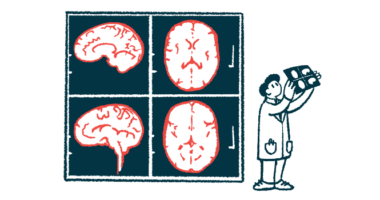Biomarker detects multiple organ involvement at sarcoidosis diagnosis
High levels of IL-2R also linked with more organs being involved

Blood levels of the angiotensin-converting enzyme (ACE) — a common sarcoidosis biomarker — were able to distinguish between newly diagnosed sarcoidosis patients with single versus multiple organ involvement, a study shows.
Also, higher blood levels of interleukin-2 receptor (IL-2R), an inflammatory marker, were linked with multiple organ involvement. ACE and IL-R2 levels appeared to increase as more organs were involved.
Patients who responded to treatment saw the levels of both markers drop significantly, whereas unresponsive patients saw no change.
These findings show ACE and IL-2R are useful blood biomarkers “in the initial evaluation of organ involvement as well as monitoring prognosis in sarcoidosis,” the researchers wrote in “SACE and IL-2R as serum biomarkers for evaluation of multi-organ involvement and prognosis of sarcoidosis,” which was published in Respiratory Research.
In sarcoidosis, small clumps of inflammatory cells called granulomas form in one or more organs and interfere with their function. The lungs and lymph nodes are most often affected, but the granulomas can appear anywhere.
Biomarkers aid sarcoidosis diagnosis
Blood biomarkers offer a relatively noninvasive way to help diagnose a disease. They can also monitor disease activity, predict outcomes, and measure treatment responses.
Previous research has identified some blood biomarkers of sarcoidosis, including ACE, which is detected in granulomas and associated with sarcoidosis activity, and IL-2R, which has been suggested to be a better diagnostic marker than ACE.
“However, the value of [blood] biomarkers has not been clearly identified for the prediction of multi-organ involvement,” wrote a team of researchers in the U.S. and China who collected blood samples from 832 patients (66.1% women), ages 20-76, newly diagnosed with sarcoidosis in the lungs, or pulmonary sarcoidosis.
All the patients were enrolled in a Chinese hospital between March 2013 and September 2021. More than half (59.3%) had between two and seven organs involved, and 42.1% of the cases also had lymph node involvement. Abnormal calcium metabolism was reported in 20.3% of patients. There were no significant differences regarding age or sex among patients with single versus multiple organ involvement.
Distinguishing multiple organ involvement
From a panel of 18 potential blood biomarkers, only ACE and IL-2R showed significant differences between the single and multiple organ involvement groups.
ACE levels were significantly higher in those with multiple affected organs compared with single organ involvement (mean 68.4 vs. 53.8 units/L), as were IL-2R levels (mean 1,220.8 vs. 958.4 units/mL).
Only ACE levels were an independent predictor of multiple organ involvement, statistical analyses adjusted for factors that may have influenced these findings showed. A cutoff ACE value of 61.5 units/L let the researchers distinguish between patients with single versus multiple organ involvement with an accuracy of 60.8%.
A cutoff ACE value of 102.5 units/L allowed the discrimination between patients with involvement of up to three organs and those with more than three affected organs with an accuracy of 73.4%.
Also, blood ACE levels were significantly higher in patients with additional extra-chest lymph node, skin, or spleen involvement, and in those with abnormal calcium metabolism.
High IL-2R levels were also significantly higher in patients with extra-chest lymph node or spleen involvement, and those with abnormal calcium metabolism. No differences in ACE or IL-2R levels were found between patients with and without other organ involvement, such as the liver, eyes, and bones/joints.
As the number of affected organs increased, mean levels of both ACE and IL-2R treaded upwards.
After diagnosis, 46.8% of patients were prescribed standard treatment with glucocorticoids, with patients with multiorgan involvement having significantly higher usage.
“The higher the number of organs involved, the greater the proportion of patients received treatment,” the researchers wrote.
Blood ACE and IL-2R levels were significantly higher among those who received treatment than in untreated patients.
One-month follow-up data from evaluable patients showed blood ACE and IL-2R levels were significantly reduced among those showing fewer symptoms, but showed no significant change in those with persistent disease.
“The positive correlation between the decline of [ACE] or IL-2R levels and the state of disease remission has been revealed in this study, strengthening the viewpoint that these two biomarkers may reflect the granuloma burden or activity in sarcoidosis,” the researchers wrote. “These findings suggest that the evaluation of biomarkers [ACE] and IL-2R at sarcoidosis diagnosis may help to predict multiorgan involvement and prognosticate sarcoidosis outcome.”
Larger, multicenter studies that follow patients over time are needed to confirm the findings, they said.







